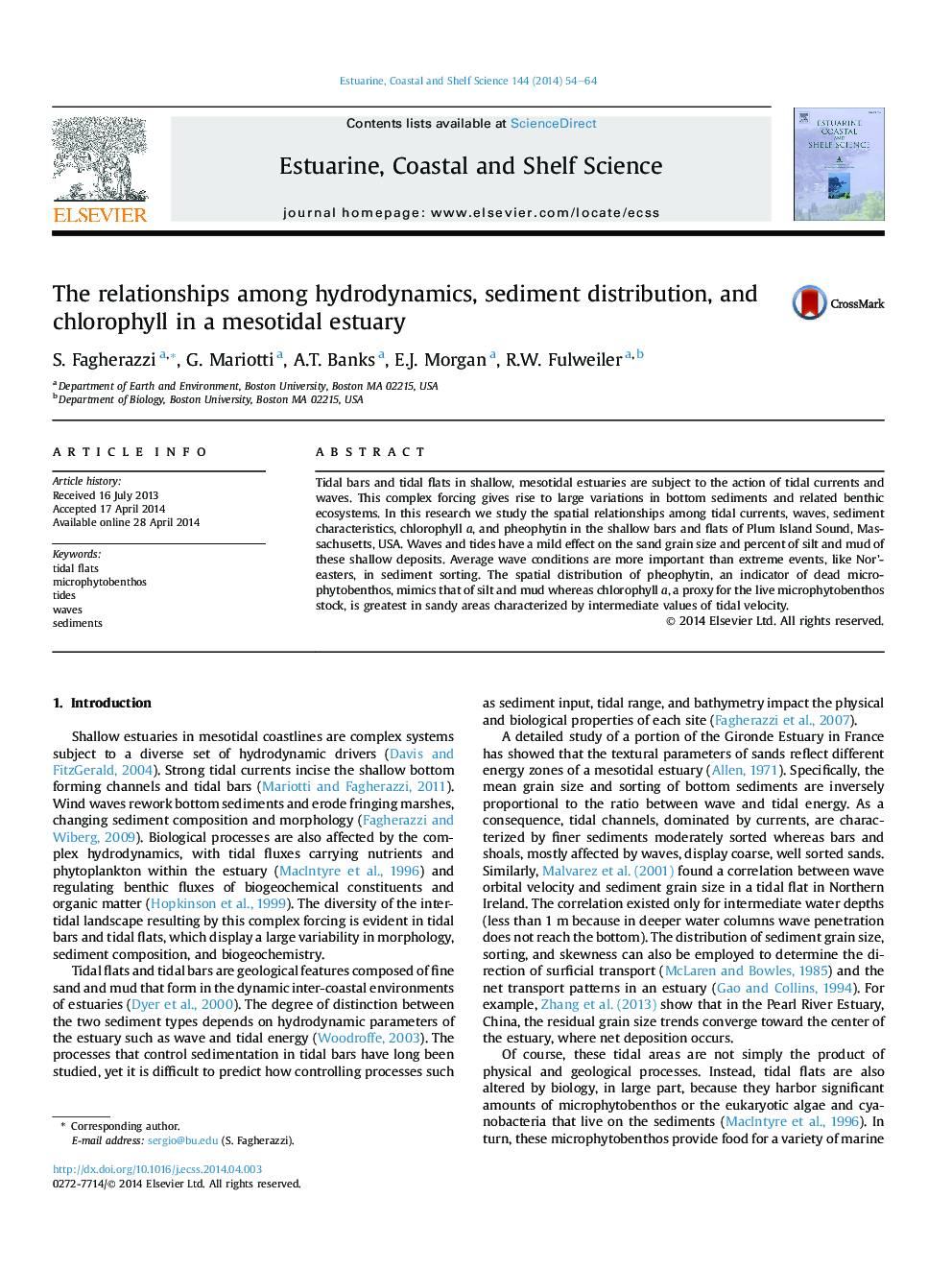| Article ID | Journal | Published Year | Pages | File Type |
|---|---|---|---|---|
| 4539671 | Estuarine, Coastal and Shelf Science | 2014 | 11 Pages |
•In an energetic estuary bottom sediments are weakly related to waves and currents.•chlorophyll a is greatest in sandy areas with intermediate values of tidal velocity.•Average wave conditions are more important than Nor’easters in sediment sorting.
Tidal bars and tidal flats in shallow, mesotidal estuaries are subject to the action of tidal currents and waves. This complex forcing gives rise to large variations in bottom sediments and related benthic ecosystems. In this research we study the spatial relationships among tidal currents, waves, sediment characteristics, chlorophyll a, and pheophytin in the shallow bars and flats of Plum Island Sound, Massachusetts, USA. Waves and tides have a mild effect on the sand grain size and percent of silt and mud of these shallow deposits. Average wave conditions are more important than extreme events, like Nor’easters, in sediment sorting. The spatial distribution of pheophytin, an indicator of dead microphytobenthos, mimics that of silt and mud whereas chlorophyll a, a proxy for the live microphytobenthos stock, is greatest in sandy areas characterized by intermediate values of tidal velocity.
